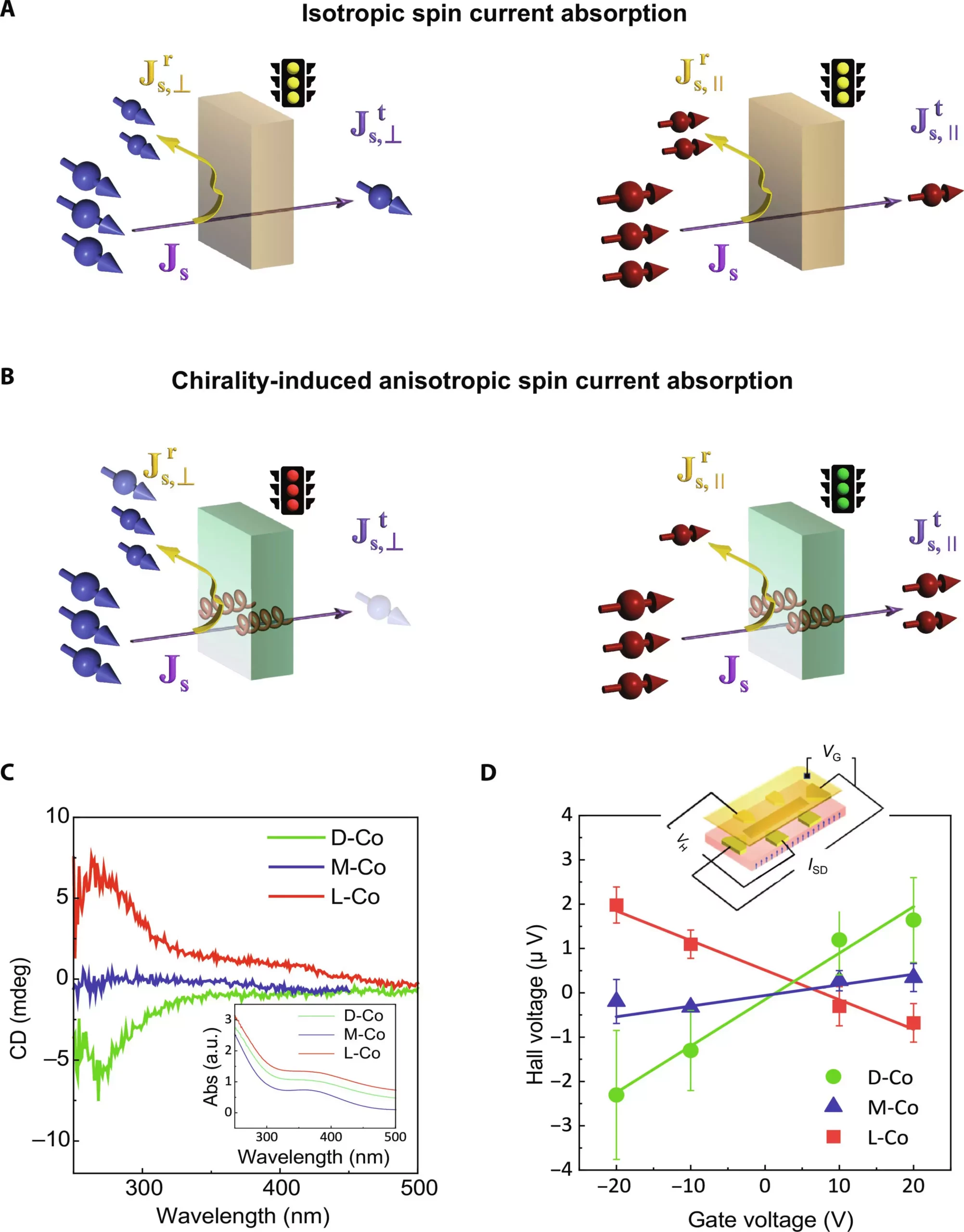The study conducted by researchers from North Carolina State University and the University of Pittsburgh delves into the intricate world of spin information in chiral materials. The researchers aimed to understand how the spin information of an electron, known as a pure spin current, moves through these unique materials. Chiral materials, such as chiral cobalt oxide thin films, have properties that cannot be superimposed on their mirror image, much like our left and right hands. This study sheds light on the potential use of chiral “gateways” in designing energy-efficient spintronic devices for data storage, communication, and computing.
Spintronic devices utilize the spin of an electron rather than its charge to create current and transfer information within electronic devices. This approach is aimed at reducing energy consumption, as moving the charge requires more energy, resulting in devices heating up with prolonged use. By focusing on spin information, researchers seek to find ways to transfer information through materials without the need to move the associated charge, thereby increasing energy efficiency in electronic devices.
The researchers found that the direction in which spins are injected into chiral materials significantly impacts their ability to pass through. When pure spin was aligned perpendicular to the material’s chiral axis, the spin did not travel through the material. However, when the spin was aligned either parallel or anti-parallel to the chiral axis, its ability to pass through the material improved drastically by 3000%. This discovery challenges the previous notion that the sense of chirality of a material was the primary factor in determining how spin moves within the material.
The implications of this study are vast, especially in the realm of spintronics and energy-efficient electronic devices. By understanding how spin information moves through chiral materials, researchers can potentially design chiral gateways for use in electronic devices. These gateways could revolutionize data storage, communication, and computing by providing a more efficient way to transfer information without the associated energy consumption of moving the charge. This innovative approach opens up new possibilities for creating advanced spintronic devices with improved performance and reduced energy usage.
The study on spin information in chiral materials conducted by researchers from North Carolina State University and the University of Pittsburgh highlights the importance of understanding the complex interactions between spin and chirality in materials. The findings pave the way for future research in designing energy-efficient spintronic devices that leverage the unique properties of chiral materials. By exploring new avenues in spin information transfer, researchers can unlock the potential for revolutionary advancements in electronic devices and pave the way for a more sustainable and efficient technological future.


Leave a Reply